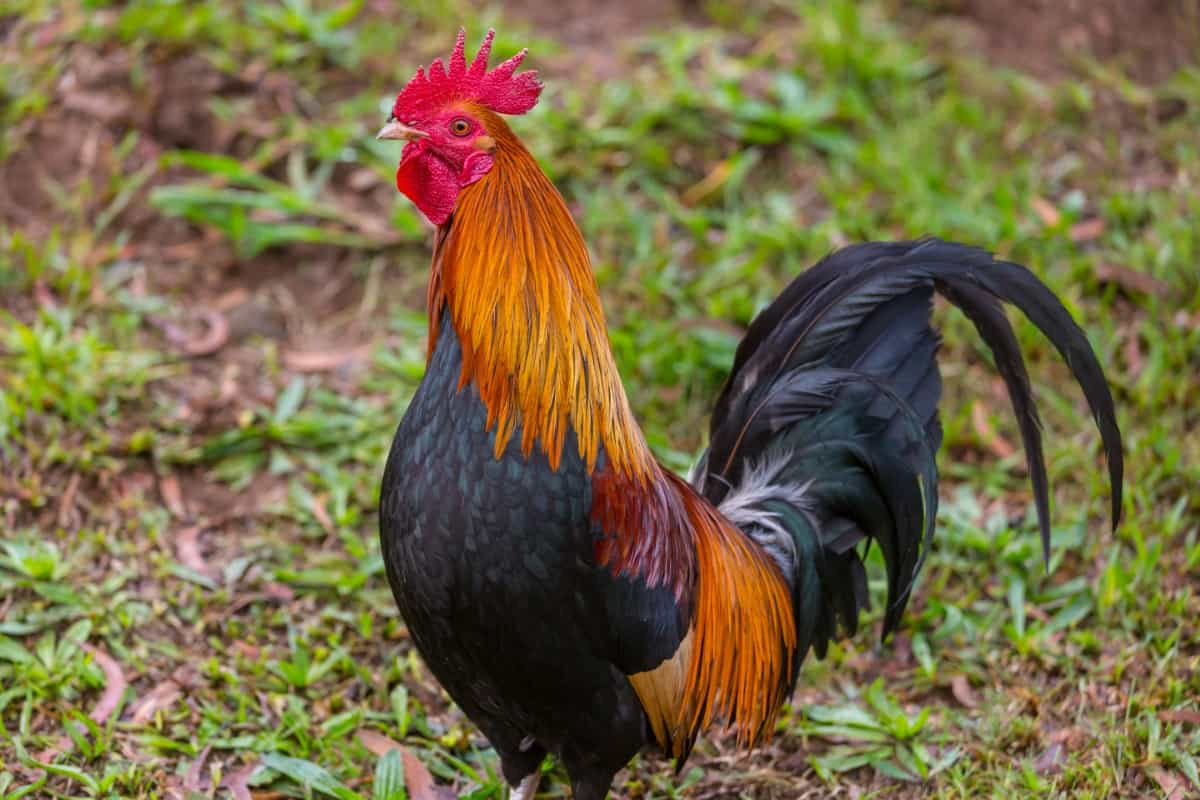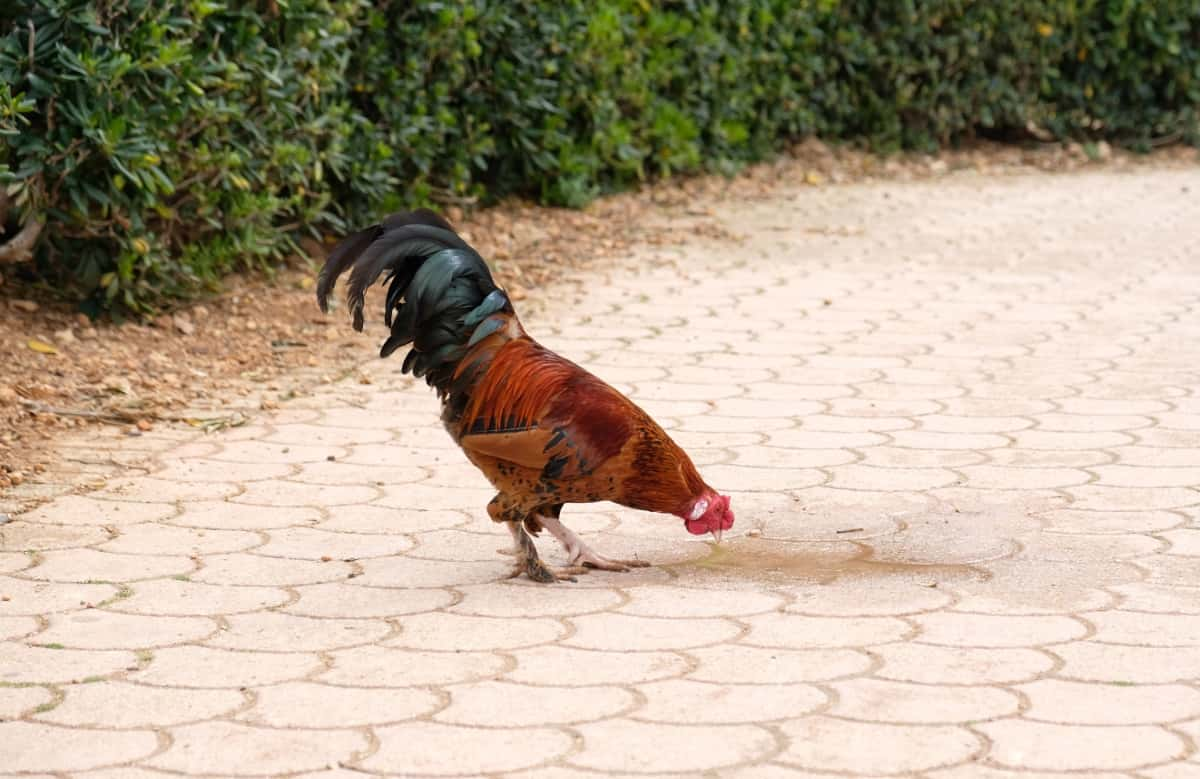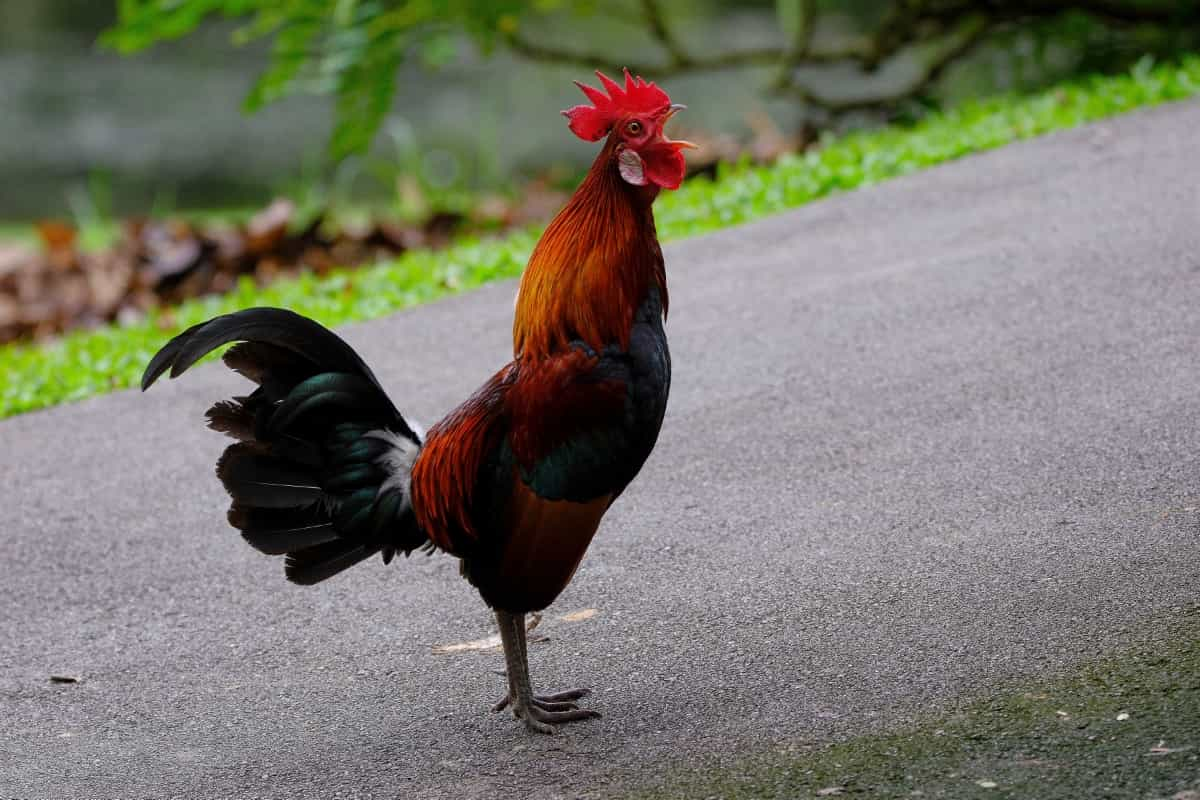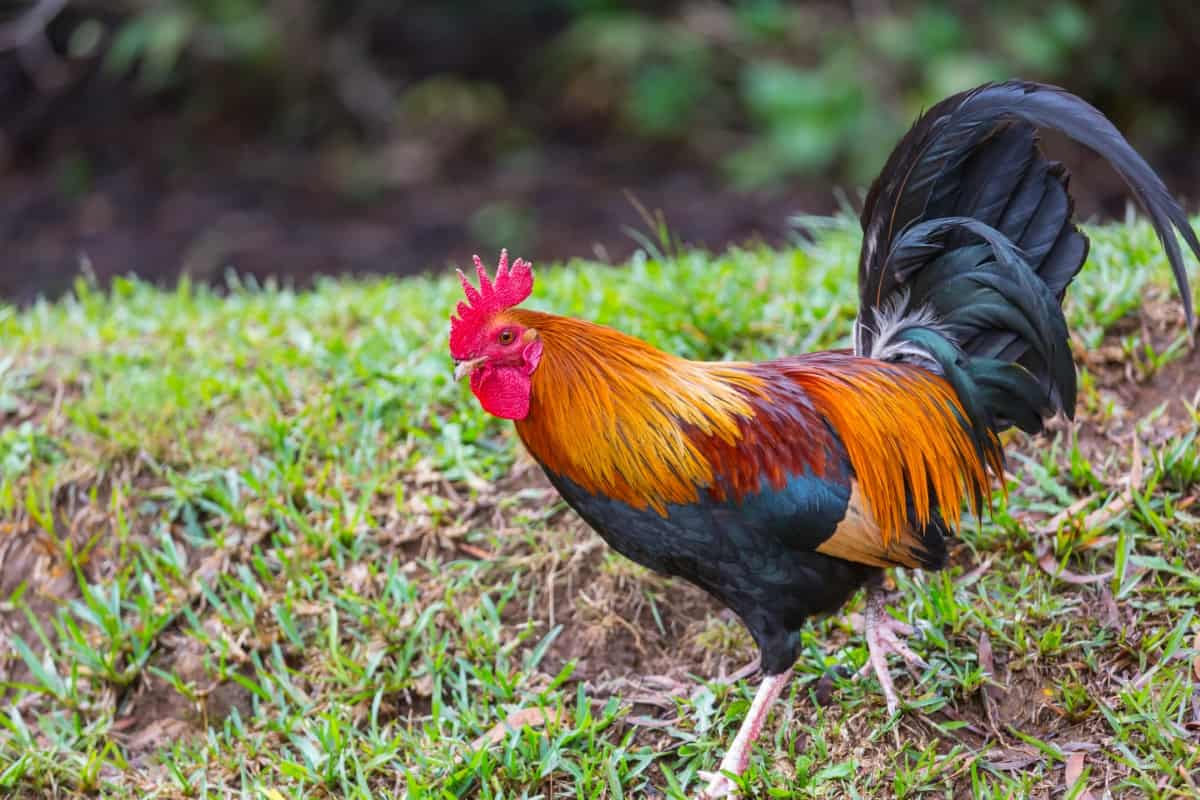Ayam Ketawa, also called the Laughing Chicken, is a unique breed of chicken renowned for its distinctive laughter-like vocalizations. Originating from Indonesia, particularly the island of Java, Ayam Ketawa has gained popularity not only for its amusing sounds but also for its striking appearance and gentle demeanor. Here’s an introduction to some key characteristics, breeding information, egg-laying habits, price range, and lifespan of this fascinating breed

All You Need to Know About Ayam Ketawa
History and Origin: Indonesian Ayam Ketawa History
Ayam Ketawa, meaning “laughing chicken” in Indonesian, originated in Java. Bred for its unique, laughter-like crowing, this ornamental chicken gained popularity in the 20th century. Its distinct vocalization, resembling human laughter, is a result of selective breeding. The breed combines local Indonesian chickens with Chinese breeds.
Revered for its entertaining nature and distinctive appearance, Ayam Ketawa is not typically raised for meat or egg production but is valued for its cultural significance and amusing crowing, reflecting the harmonious blend of local traditions and Chinese influence in Indonesia’s poultry breeding history.
Laughing Chicken Characteristics
- Distinctive Plumage: Ayam Ketawa, also known as the Laughing Chicken, boasts a unique appearance characterized by its extravagant plumage.
- Ayam Ketawa Sound: Ayam Ketawa, also known as Laughing Chicken, is named for its unique cackling sound, resembling human laughter.
- Small Size: Typically smaller compared to other chicken breeds, Ayam Ketawa chickens are compact with vibrant plumage.
- Feathered Crest: Its most striking feature is the feathered crest atop its head, resembling a miniature crown or tufted mane.
- Ayam Ketawa Colors: Typically adorned with vibrant colors such as red, gold, and black, enhancing its visual appeal.
- Compact Build: It has a compact build with a well-proportioned body, contributing to its elegant appearance.
- Distinctive Comb and Wattles: The breed typically sports distinctive combs and wattles, further accentuating its unique look.
Breeding
Breeding Ayam Ketawa requires careful selection of breeding stock based on desired traits such as vocalization, temperament, and physical conformation. Breeders often prioritize birds with strong vocalization abilities and vibrant plumage colors. Introduce compatible breeding pairs or trios based on their genetic diversity and desired traits. Monitor mating behavior to ensure successful fertilization. Allow natural mating to occur, but supervise to prevent aggression or injury.
Collect fertilized eggs promptly and place them in a suitable incubator set to the appropriate temperature and humidity levels. For Ayam Ketawa hatching eggs, follow the recommended incubation period for Ayam Ketawa eggs, typically around 21 days. Once the eggs hatch, provide proper care to the baby chickens, including warmth, access to clean water, and baby chicken starter feed. Closely keep an eye on their health and address any issues promptly.
Feeding and Nutrient Requirements
Ayam Ketawa requires a balanced diet for optimal health and performance. Feed each chicken approximately 120-150 grams of high-quality poultry feed per day, divided into two meals. Ensure the feed contains essential nutrients like protein (18-20%), carbohydrates, vitamins, and minerals. Additionally, supplement their diet with green leafy vegetables, grains, and kitchen scraps.
Adequate access to clean water is crucial. Adjust feed quantity based on the chicken’s age, weight, and activity level. Regularly monitor their condition and consult a poultry nutritionist for precise recommendations. Providing a well-balanced diet supports the Ayam Ketawa’s unique characteristics and promotes overall well-being.
Ayam KetawaCoop/ Housing Requirements
Ayam Ketawa chickens require a coop with ample space for roosting and nesting, allowing at least 4 square feet per bird. The coop should be well-ventilated and protected from predators. Provide roosts for perching and nesting boxes for laying eggs. Ensure bedding is kept clean and dry, with regular maintenance to prevent disease. Outdoor access to a secure yard is beneficial for exercise and natural foraging. Additionally, shelter from extreme weather conditions should be available. Regular cleaning and maintenance are crucial for their well-being.
In case you missed it: Old English Game Chickens: Origin, Characteristics, and Fighting Style

Egg-Laying Patterns
Ayam Ketawa chickens, known for their unique laughing vocalization, typically lay around 150 to 200 eggs per year. These eggs are relatively small compared to other breeds, weighing approximately 40 to 45 grams each. The egg color of Ayam Ketawa chickens varies but commonly ranges from light cream to tan.
Their eggs tend to have a slightly speckled appearance. Despite their smaller size, Ayam Ketawa eggs are prized for their rich nutritional value and flavor. With utmost care and nutrition, these chickens can consistently produce eggs throughout the year, making them a valuable addition to any backyard or small-scale poultry operation.
Ayam Ketawa Chicken Price: Where to Buy
Ayam Ketawa chickens, prized for their distinctive laughing vocalizations, can vary in price depending on factors such as age, breed purity, and location. On average, you can expect to pay Ayam Ketawa prices from $20 to $50 per bird. To purchase Ayam Ketawa chickens, you can explore local poultry farms, specialty breeders, or online marketplaces such as Craigslist, Facebook Marketplace, or specific poultry breeder websites to buy Ayam Ketawa online.
Ensure to research the seller’s reputation and inquire about the bird’s health and lineage before making a purchase. Also, join social media groups dedicated to poultry enthusiasts for recommendations and advice.
Lifespan
The Ayam Ketawa lifespan ranges from 5 to 8 years. With proper care and attention to their needs, including a balanced diet and suitable living conditions, Ayam Ketawa chickens can thrive and provide companionship for several years, enriching the lives of those who appreciate their charming personalities and delightful vocalizations.
In case you missed it: Ixworth Chicken: Breed Characteristics, Temperament, Eggs, Price, Uses, and Raising

Features and Temperament
Renowned for its cheerful demeanor, this breed is characterized by its jovial and friendly nature. It exhibits a remarkable tendency to vocalize in a distinctive laughing manner, adding an aura of amusement to its presence.
Despite their comical disposition, Ayam Ketawa chickens are also known to be fairly docile and easy to handle, making them popular among poultry enthusiasts seeking not only entertainment but also a manageable addition to their flocks. Their pleasant demeanor and amusing vocalizations make them a delightful choice for both hobbyists and farmers alike.
Maximizing Egg Production
To maximize Ayam Ketawa egg production, ensure they have a balanced diet rich in protein, supplemented with calcium for strong eggshells. Provide ample space for exercise and nesting boxes in a stress-free environment. Regular health checks and vaccinations are essential. Select breeding stock with high egg-laying potential and monitor their performance closely.
Implement efficient lighting schedules to mimic natural daylight cycles, stimulating consistent egg production. Proper management practices, coupled with attentive care, can optimize Ayam Ketawa chicken’s egg-laying capabilities, ensuring a steady supply of quality eggs.
In case you missed it: Ayam Pelung: Chicken Breed Profile, Characteristics, Temperament, Breeding, and Price

Conclusion
When considering raising Ayam Ketawa chickens, it’s important to research thoroughly and ensure you can provide the necessary care they require. Ayam Ketawa is not a standardized breed recognized by major poultry associations, so there might be variations in appearance and characteristics among individual birds. If you’re interested in raising laughing chickens, it’s highly recommended to source them from reputable breeders who are knowledgeable about the breed’s specific traits and care requirements.
Note: The images presented in this post are intended solely for representation purposes. The images are meant to serve as visual aids and should not be relied upon as accurate representations of their real-life counterparts.
- Feed Your Flock for Less: Top 10 Tips to Save on Chicken Feed
- Ultimate Guide to Ossabaw Island Hog: Breeding, Raising, Diet, and Care
- Hatching Answers: The Top 10 Reasons Your Chickens Aren’t Laying Eggs
- Eggs and Economics: Breaking Down the Cost of Raising Backyard Chickens
- Defend Your Greens: Proven Methods to Keep Iguanas Out of Your Garden
- Ultimate Guide to Cinnamon Queen Chicken: A Comprehensive Guide for Beginners
- Ultimate Guide to California Tan Chicken: Breeding, Raising, Diet, Egg-Production and Care
- Ultimate Guide to Marsh Daisy Chicken: Breeding, Raising, Diet, and Care
- 10 Types of Chicken Farming Businesses You Can Start for Profits